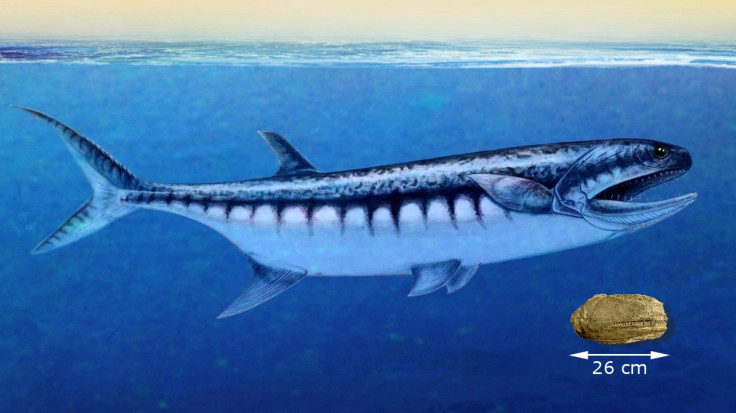Bigmouth Fish With 3 Rows Of Teeth Ruled Ocean After Mass Extinction
A long fish with a huge mouth was the king of the ocean after a mass extinction event wiped out most of the world’s marine creatures millions of years ago.
The Birgeria americana was almost 6 feet long and had three rows of razor-sharp teeth that it used to rule the seas. According to a study in the Journal of Paleontology, the newly discovered predator shows that life rebounded more quickly after the mass extinction than scientists previously thought.
Read: Take a Look at the Biggest Shark Ever, an Extinct Monster
That deadly event occurred about 252 million years ago and was the worst known mass extinction in the history of the Earth. It is commonly known as the Great Dying and perhaps 90 percent of the world’s marine creatures were killed and most of the terrestrial species as well, during a time when the Permian period met the Triassic period.
The latter of those two is most famous for being the era that gave rise to the first dinosaurs, which in turn would meet their fate in another mass extinction event 65 million years ago.

Scientists do not know what exactly caused the Great Dying — whether it was severe volcanic activity, an asteroid impact, prehistoric climate change or any other number of calamitous circumstances. It is also unclear how life bounced back. But the Birgeria americana is a clue. While experts have suggested that it took about 5 million years for the first big predators to emerge in the post-apocalyptic world, new fossil evidence condenses that timeline.
As Earth’s biodiversity grew, the big-mouthed fish appeared before 1 million years had passed since the mass extinction. That’s based on the discovery in Nevada of a fossilized skull, which belongs to a previously undiscovered species. While the skull’s resting place is a desert now, it was once covered in water.
“This predator occupied the sea that once covered present-day Nevada and the surrounding states already one million years after the mass extinction,” the University of Zurich explained.

It’s one of a small group of vertebrate fossils that have been discovered from that post-mass extinction time period. And this skull, which is almost a foot long and contains teeth that are up to three-quarters of an inch tall, shows a lot of detail.
“The surprising find … is one of the most completely preserved vertebrate remains from this time period ever discovered in the United States,” lead study author Carlo Romano said in the university statement.
Despite having just the skull fossil to work with, scientists might be able to describe the Birgeria americana ’s behavior based on other members of its extinct family, which could be found all around the world, although this particular specimen is the earliest found that is so large.
“Birgeria hunted similarly to the extant great white shark: the prey fish were pursued and bitten, then swallowed whole,” the university said.
Read: 4 Iconic American Animals That Are Extinct
The long fish partially fills in a gap of known predatory vertebrates during its era — a gap that scientists have referred to as an “equatorial vertebrate eclipse” because Nevada was close to the equator at this time in history — and shows that apex predators swam the ocean not long after the Great Dying.
“The vertebrates from Nevada show that previous interpretations of past biotic crises and associated global changes were too simplistic,” Romano said.
This toothy fish also tells scientists something about ocean temperatures in the Nevada area 250 million years ago: The eggs of bony fish today cannot develop when the water is hotter than about 97 degrees Fahrenheit, so during the Early Triassic period this bony fish probably had the same limitation and thus would not have lived in water any hotter.

© Copyright IBTimes 2025. All rights reserved.





















